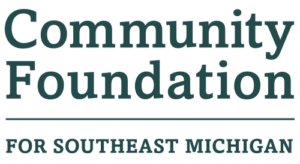2023 Year End Charitable Planning Reminders

Tax Benefits

Laura L. Brownfield
General Counsel
Charitable contribution deductions for donations to public charities are limited to 60% of AGI for cash gifts, while the limit for appreciated non-cash assets held more than one year is 30% of AGI as determined by the fair market value of the securities when donated. Though the maximum deduction is lower for a gift of appreciated securities than it is for cash, donors can avoid the 20% long-term capital gains tax. If your donor’s 2023 contribution and deduction exceed these AGI limits, the amount above limits may be carried over for up to five subsequent years.
Timing of Sales/Capital Gains and Losses
To avoid recognizing capital gains altogether, donors can consider donating appreciated property to charity to receive a fair market value deduction and avoid capital gain (if held for more than one year) rather than selling it especially if doing so may result in overall itemized deductions exceeding the donor’s standard deduction for 2023. Pre-2026 Tax Planning. The lifetime exemption from federal gift, estate and generation-skipping transfer tax will rise to $13.61 million in 2024. Practitioners should educate donors about the benefits of planning before the exemption is cut in half by operation of law in 2026, or earlier, depending on the outcome of the 2024 federal elections. As a reminder to professional advisors working with charitably inclined individuals: trusts are not limited by percentage limitations when deducting charitable contributions. Under Internal Revenue Code Section 642(c), trusts can deduct gross income paid for a charitable purpose. Additionally, trusts can make an election to treat charitable contributions of gross income made during the taxable year as if made in the preceding taxable year.
Itemized Deduction Planning
For 2023, the standard deduction is $13,850 for single filers and $27,700 for married couples filing jointly. If your total itemized deductions are below those amounts, donors can consider adjusting the timing of deductible expenses – “bunching” – so that they are higher in one year and lower the following year. This can be accomplished by paying deductible expenses in 2023, such as mortgage interest due in January 2024, estimated tax payments due in early 2024 for state purposes, or doubling up on charitable contributions for 2023 and 2024 before year-end.
IRA Donations to Charity
If a donor is 70½, he can make direct contributions (Qualified Charitable Distributions or “QCDs”) from his traditional or inherited IRA directly to your charity of up to $100,000 during 2023 (and remember this amount will be indexed for inflation starting in 2024) but will not claim a charitable contribution deduction. Conversely, the amounts are not included in the donor’s taxable income and can be used to satisfy his RMD. Charitable distributions to DAFs do not qualify, but gifts directly to public charities qualify. While withdrawals from traditional IRAs are taxable income, QCDs are not. QCDs can also be used whether you take the standard deduction or itemize deductions.
Charitable Gift Annuities
A charitable gift annuity may make sense for a donor who desires an income stream. The American Council on Gift Annuities voted on November 17, 2023, to increase the rate of return assumption we use when suggesting maximum payout rates for charitable gift annuities. The return assumption will be moving to 5.75% from 5.25%, effective January 1, 2024. As such, the suggested maximum payout rates for single-life annuity contracts will be moving higher by approximately 0.4%, depending on the age of the beneficiary. The suggested maximum joint-life annuity contracts will also be heading higher by a similar amount.
IRA Funded CGAs
Beginning in 2023 QCDs can be used to fund a life income gift (charitable remainder trust or charitable gift annuity). Donors over age 70½ to make a qualified charitable distribution in exchange for a charitable gift annuity or to fund a CRT following SECURE 2.0 passed last December. Such distribution is limited to $50,000 per individual and can only be made in one tax year. Gifts can be split between different charities. Income beneficiary limited to donor and/or spouse only, special rules apply if a spouse does not meet age requirements.
Note: This material was developed by Community Foundation for Southeast Michigan. It is published with the understanding that neither the publisher nor the author is engaged in rendering legal, accounting, or other professional services. If legal advice or other expert assistance is required, the services of a professional advisor should be sought.
